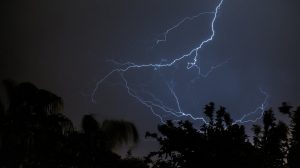
A Lightning Imaging Sensor (LIS) is headed to the International Space Station (ISS) as part of CRS-10, a mission in which a SpaceX rocket will carry the Dragon cargo craft for an eventual rendezvous with the space station.
LIS is a small instrument that uses space-based observation to pinpoint and measure lightning strikes and provide real-time lightning data. Developed by a team at NASA’s Marshal Space Flight Center and the University of Alabama Huntsville, the LIS is actually a back-up copy of a device that was part of the Tropical Rainfall Measuring Mission (TRMM) which was launched into space in 1997. TRMM orbited Earth from 1997 to 2015.
“The LIS used in this follow-on mission is an exact duplicate of the sensor used on TRMM,” Richard Blakeslee, science lead for the LIS at NASA’s Marshall Space Flight Center, said in a statement from the agency. “But it will sample lightning over a wider geographical area.”
The TRMM satellite orbited Earth between 35 degrees north latitude and 35 degrees south latitude, so the original LIS could observe only the planet’s tropical regions. The space station, however, has a higher orbital inclination and therefore provides a vantage point that will allow the LIS to observe areas closer to the poles in the Northern and Southern hemispheres, NASA officials said. Now, the LIS will be able to sample lightning in a broader area from 56 degrees North and 56 degrees South.
The LIS is riding in the trunk of the Dragon cargo craft alongside the SAGE III device. The station’s robotic arms will take the two instruments from the Dragon and will mount them to outside of the International Space Station.